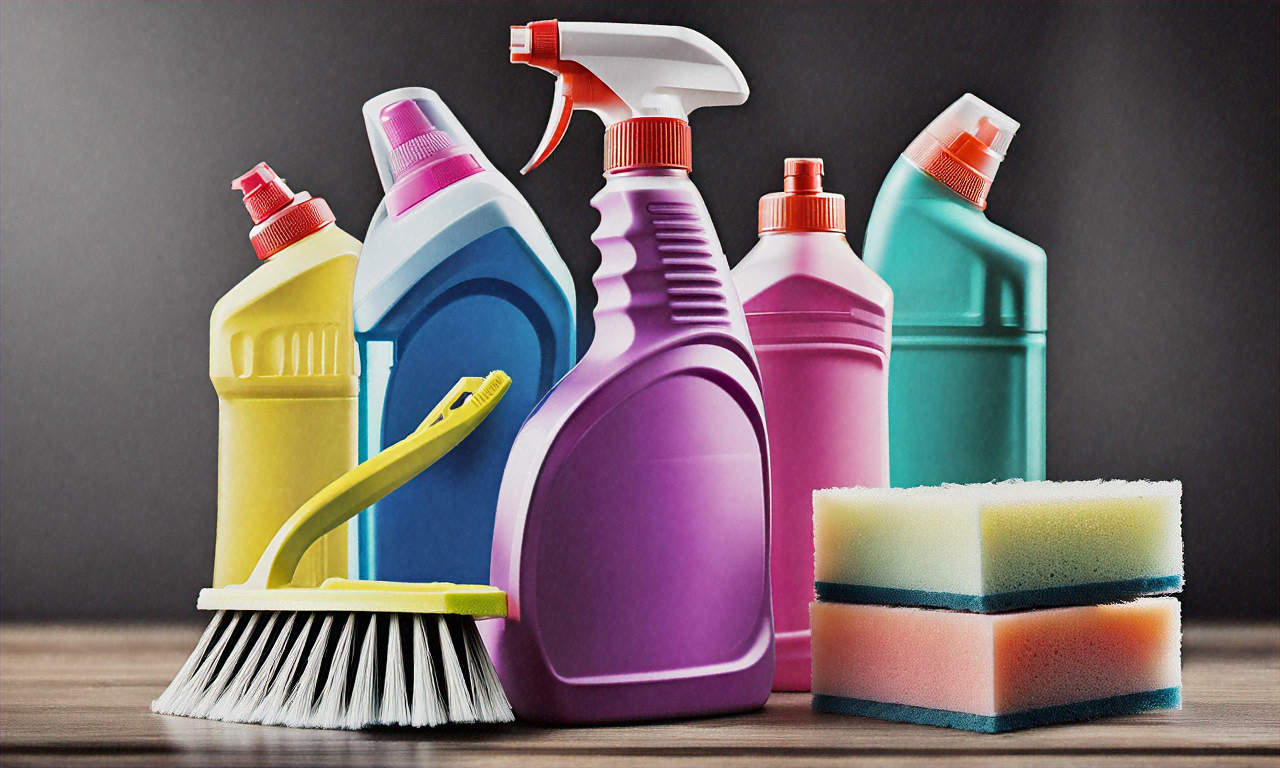What You Need to Know About Cleaning Product Costs
Understanding cleaning product costs helps households make informed purchasing decisions while maintaining effective cleaning routines. From basic multipurpose cleaners to specialized solutions, prices vary significantly based on brand, ingredients, and packaging size. Smart shoppers can reduce their cleaning expenses by comparing products based on effectiveness, concentration levels, and long-term value rather than just upfront costs.

Household cleaning expenses represent a significant portion of monthly budgets, with American families spending an average of $600 annually on cleaning supplies. The cleaning product market offers countless options at various price points, making it essential to understand what drives these costs and how to make value-driven choices for your home.
Average Prices for Common Household Cleaning Products and Supplies
Typical household cleaning products range from budget-friendly options under $2 to premium formulations exceeding $15 per bottle. All-purpose cleaners generally cost between $2-8, while specialized products like glass cleaners and bathroom cleaners fall within the $3-10 range. Laundry detergents show the widest price variation, from $4 for basic powder formulas to $20 for concentrated pods or eco-friendly alternatives.
Floor cleaning products typically range from $3-12, depending on the surface type and formula concentration. Dish soaps vary from $1-6, with antibacterial and natural formulations commanding higher prices. Paper towels and cleaning cloths add another $15-30 monthly to most households’ cleaning budgets.
Factors That Affect Cleaning Product Costs
Brand reputation significantly influences cleaning product pricing, with established names often charging 20-50% more than generic alternatives. Premium brands invest heavily in research, marketing, and packaging, costs that transfer to consumers. However, store brands frequently offer comparable effectiveness at substantially lower prices.
Ingredient quality and concentration levels directly impact product costs. Natural, plant-based, or organic cleaning products typically cost 30-80% more than conventional formulations due to sourcing expenses and specialized manufacturing processes. Concentrated formulas may appear expensive initially but often provide better value through extended usage periods.
Packaging size creates notable price variations, with bulk purchases generally offering better per-unit value. Family-size containers often cost 15-25% less per ounce compared to standard sizes, while travel or convenience sizes carry significant premiums.
Tips for Comparing Cleaning Products Based on Effectiveness and Long-Term Value
Effective comparison requires calculating cost-per-use rather than focusing solely on purchase price. Concentrated products that require dilution often provide superior value despite higher upfront costs. Check dilution ratios and coverage areas to determine true cleaning capacity.
Reading ingredient lists helps identify products with similar active components at different price points. Many expensive cleaners contain identical cleaning agents to budget alternatives, with differences primarily in fragrance, packaging, or marketing positioning.
Consider multi-purpose products that eliminate the need for specialized cleaners. A quality all-purpose cleaner can replace multiple single-use products, reducing both storage requirements and overall costs. However, ensure the product effectively handles your specific cleaning challenges before committing to this approach.
| Product Category | Budget Option | Mid-Range Option | Premium Option |
|---|---|---|---|
| All-Purpose Cleaner | Generic Brand - $2-3 | Method - $4-5 | Seventh Generation - $6-8 |
| Laundry Detergent | Arm & Hammer Powder - $4-6 | Tide Liquid - $8-12 | Ecover Concentrate - $15-18 |
| Dish Soap | Store Brand - $1-2 | Dawn Original - $3-4 | Mrs. Meyer’s - $5-6 |
| Glass Cleaner | Generic Ammonia-Based - $2-3 | Windex - $4-5 | Better Life Natural - $6-8 |
| Bathroom Cleaner | Comet Powder - $2-3 | Scrubbing Bubbles - $5-6 | Method Antibacterial - $7-9 |
Prices, rates, or cost estimates mentioned in this article are based on the latest available information but may change over time. Independent research is advised before making financial decisions.
Making Smart Purchasing Decisions
Timing purchases around sales cycles can generate substantial savings on cleaning supplies. Many retailers offer quarterly cleaning product promotions, particularly during spring cleaning season and back-to-school periods. Combining manufacturer coupons with store sales maximizes savings potential.
Subscription services and bulk buying programs often provide consistent discounts for frequently used products. However, calculate storage costs and product shelf life to ensure bulk purchases remain economical. Some cleaning products lose effectiveness over time, making excessive stockpiling counterproductive.
Consider the environmental and health costs alongside financial factors. Products requiring extensive ventilation or protective equipment may carry hidden costs through increased utility usage or potential health impacts. Investing in safer, more effective products often proves economical long-term.
Understanding cleaning product costs enables informed household budget management while maintaining cleanliness standards. By evaluating products based on effectiveness, concentration, and long-term value rather than just purchase price, consumers can optimize their cleaning routines without overspending. Regular comparison shopping and strategic purchasing timing further enhance household cleaning efficiency and cost-effectiveness.




